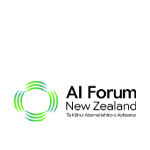Last week I had the pleasure of hosting the Wellington chapter of the AI Forum of New Zealand’s AI for the Environment Hackathon Festival. It’s a tremendous event that brought together over 250 hackers across six locations.
Participants were are asked to identify, design and invent a solution to a wicked environmental problem.
Well that’s what they’re asked to do. In practice, participants were required to recruit talent, create a culture, find a customer, create a market, undertake R&D, manage production lines, build, test and iterate a solution, develop a go-to-market strategy, and execute a sales pitch. They had to lead, collaborate, innovate, fail and start again.
And its all with people they have never before. And its all within a window of about 13 hours.
And its wonderful.
Day 1 starts with an awkward shuffling of feet, insecurity and small talk. Participants generally have no idea of the problem they’ll be tackling, nor what data they can use to solve it. Day 2 finishes with boisterous comradery, thought out market solutions, wireframes, MVPs and polished presentations. Participants join the festival with perhaps an interest in AI/ML. They leave with a newly discovered passion for geckos, predator eradication and the restoration of riparian zones.
This is the third year I have been involved in the Hackathon Festival. I thought I’d jot down some of the factors that I thought led to success.
Be a melting pot of perspectives, capabilities and experiences
The teams that do the best are those that are able to mobilise a mix of technical, business and policy skills. Often these teams are formed from “the leftovers” – those that turn up without a pre-made team. Ideas get challenged, there’s less group think, there’s a broader everything needs to be articulated to an audience that’s coming in fresh.
Policy wonks make pretty bad coders. And the reverse is true. But everyone’s input is valid. One hacker tell me that she felt out of her depth because the others in her team were hardcore comp science students, while she was just a policy officer. But to me, that made her the most important member of the team – in that environment, her skill set was unique. She had superpowers that no one else in the team held; she was the wizard the team needed to succeed.
Have gumption, don’t be precious
In a hackathon, as in business, speed is crucial. If you can’t find the data you need, don’t hesitate to ask for it. Email someone, call someone – take action. The hackathon environment demands quick thinking and bold moves.
Encourage your team to put crazy ideas on the table. Instead of shutting down concepts with “it can’t work because of ____”, challenge yourselves to answer “we could make this work if ____”. This approach fosters creativity and problem-solving.
Resilience is key. Be prepared to fail fast, learn quickly, and pivot when necessary. If an approach seems to be leading nowhere, be willing to change direction. Extract what lessons you can from the failure and use those insights to strengthen your new approach. One of the best compliments I ever received was that I had “strong views, loosely held”. I’ve tried to turn that into a creed to live by.
There’s a human element here too. What mechanisms (/norms/rules) your team adopts to make decisions will make a difference – especially in an environment where people are meeting each other for the first time and everyone is being polite. Teams are put under immense pressure to deliver – and it’s culture which determines whether or not you get a diamond.
Design for impact
As a judge I tended to mark down solutions that ultimately create “better data sets”. Better data can help make better decisions sure, and that’s really important, but there’s still a step or two that needs to happen before impact is realised. The solutions that truly stand out are those that demonstrate a direct path to making a difference.
It’s incredible how fast people develop a passion for alpine parrots and water waste. Once you start diving into a problem its hard not to be consumed by it. The beauty of this event though is that judges are forced to compare beached whale-apples, with pest control-oranges. What’s the killer stat? The metaphor? The best pitches were those that left me with a nugget of insight that I will repeat to others and sell your product for you.
The teams that did really well, showed that they really understood their customer. Teams that struggled maybe cam to the realisation that there’s a marked difference between those who will benefit from your solution, and those that might be willing to pay for it, a bit too late.
Hacking the system
Everything above is a metaphor for the innovation system and there are some important learnings to be had. What mattered was culture, talent, R&D, industry-research-government collaboration, commericalisation, entrepreneurship, hard skills, soft skills, infrastructure, data, strategy mission.
A huge thanks to everyone who participated in the competition, the mentors, judges and guest speakers that made it happen, and everyone behind the scenes. I can’t wait to see how the winning teams from across New Zealand perform at the Aotearoa AI Summit in September. And, of course, I’m really looking forward to next year.
By Tim Bradley
First published on LinkedIn.
14 August 2024






